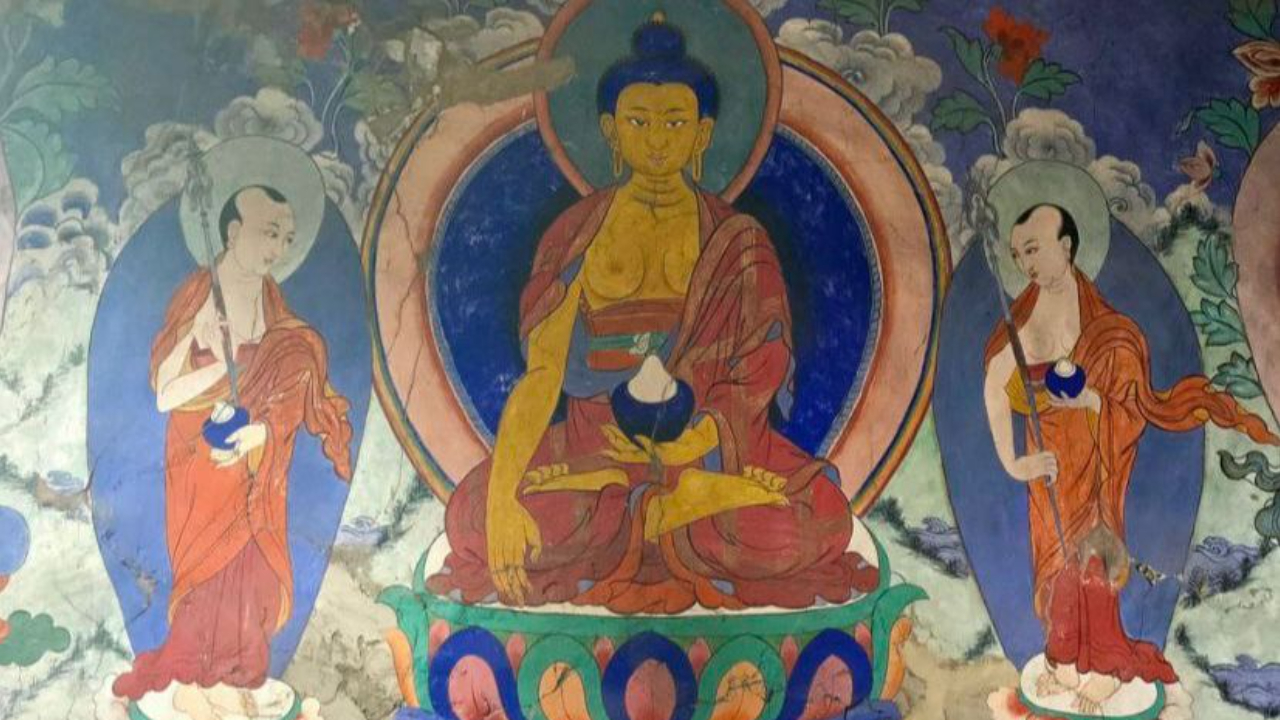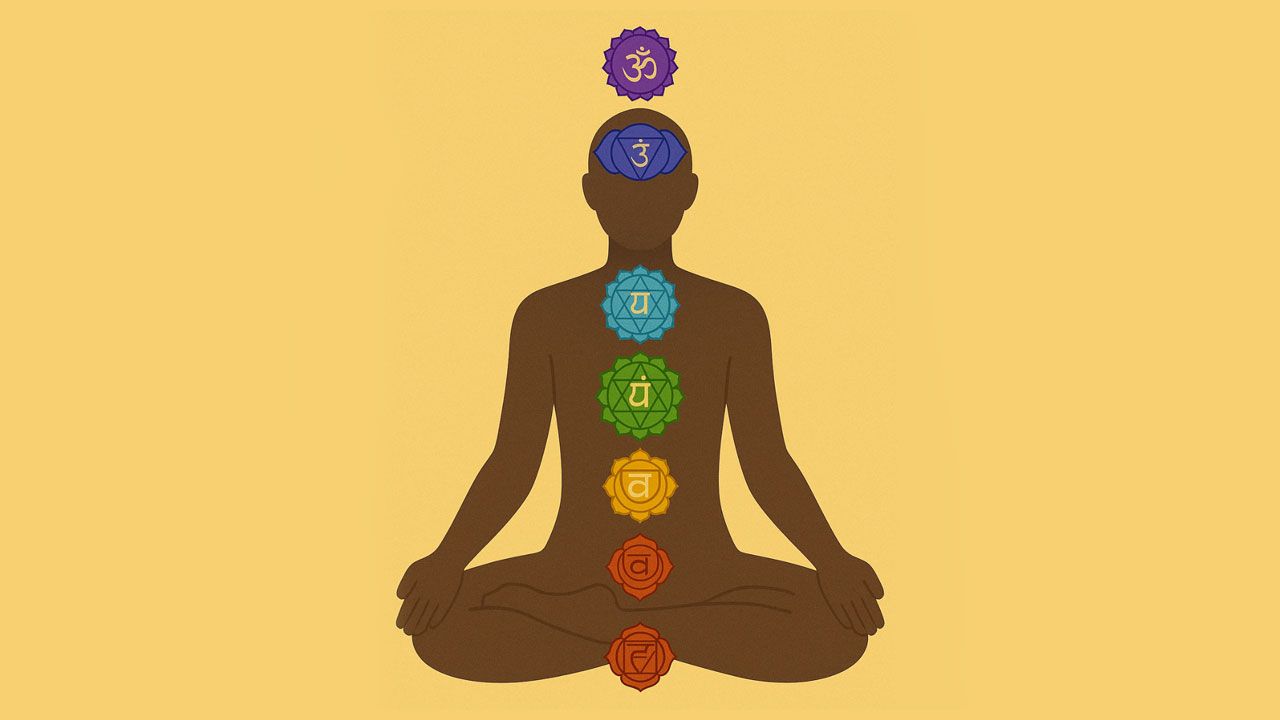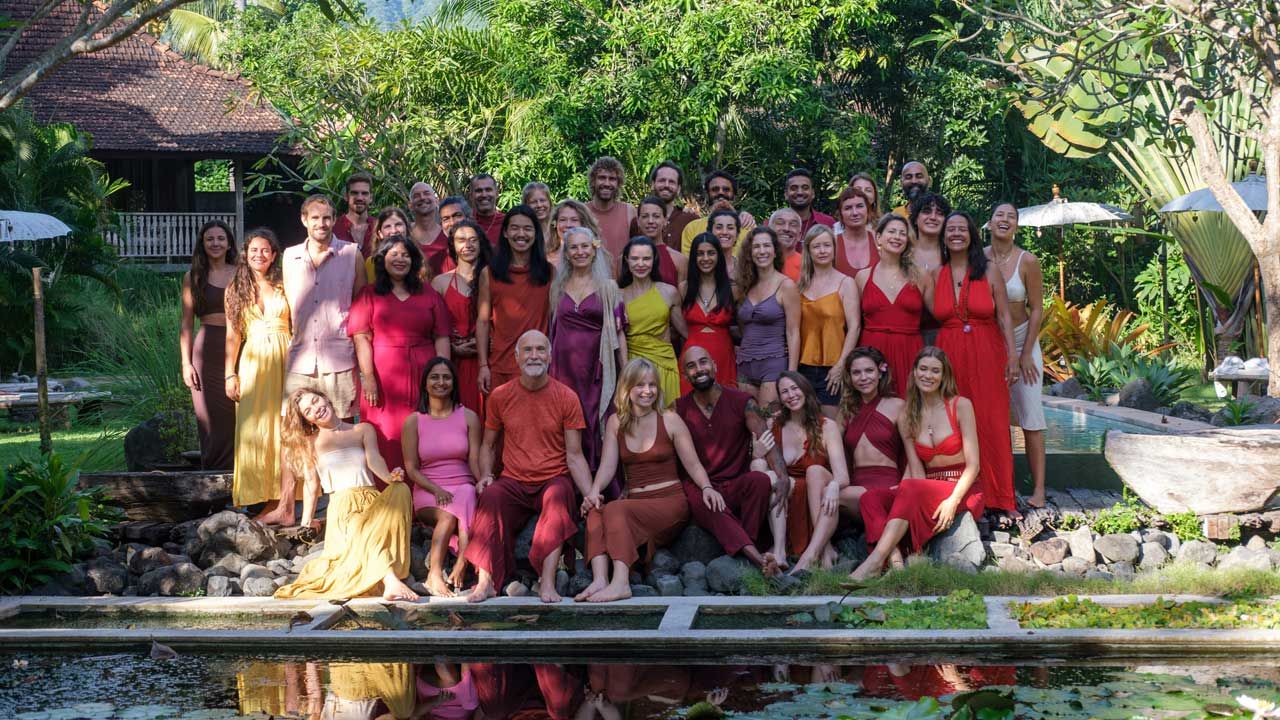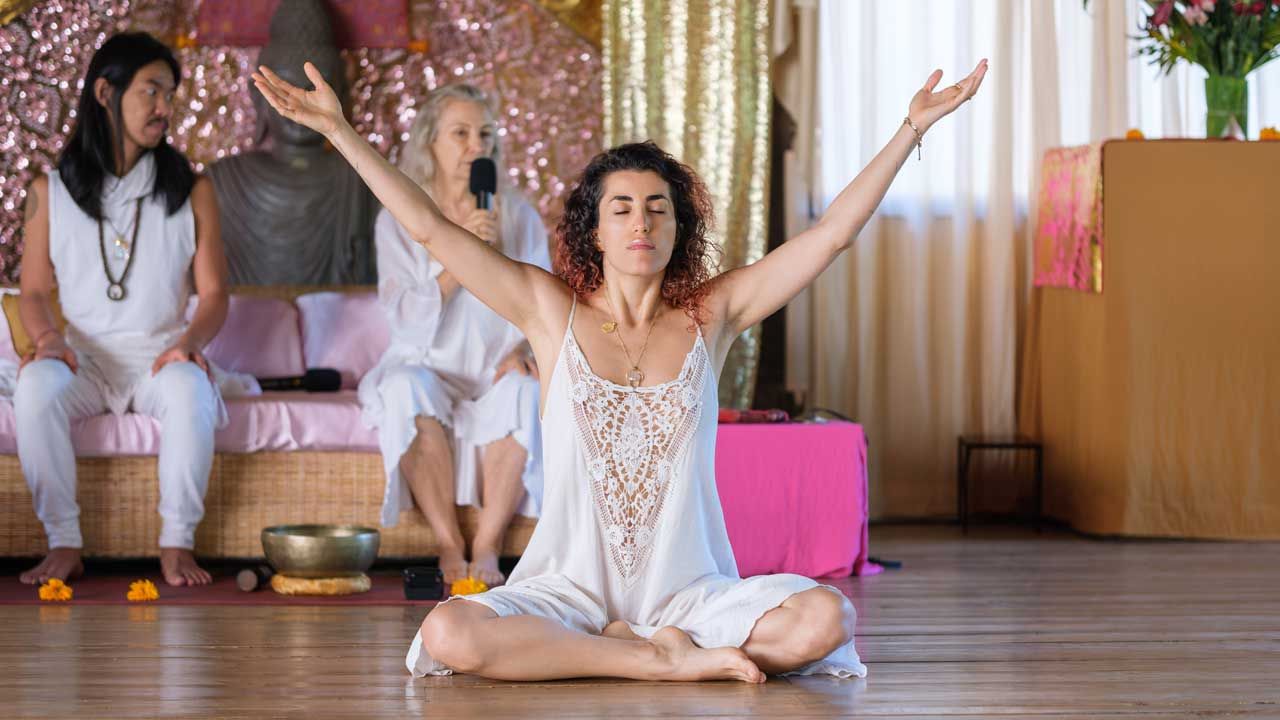The Life of a Sannyasin: Being One of Osho’s Disciples
Sep 17, 2024
Stepping onto the spiritual path as a Sannyasin was not a conscious choice but a calling, a mysterious pull that I couldn’t resist, even in my teenage years. At age 4, I was already feeling the stirrings of something greater. Little did I know, that pull would lead me into the presence of one of the most enlightening spiritual masters of our time, Osho.
When I first met Osho, I felt as if the air around me had intensified with the presence of the divine. His gaze was penetrating and compassionate, and in that instant, I knew that my life was about to change in ways I couldn’t yet comprehend. I was about to be reborn, not into the world of forms, but into the vast, limitless ocean of consciousness. And from that moment onward, my heart belonged to him, to the path of Sannyas, and to the journey of self-discovery.
This is a story of transformation, of leaving behind the old and stepping into the new, where every moment is a surrender to the unknown. I didn’t just become a disciple of Osho; I became a Sannyasin, embarking on a lifelong quest to understand the essence of life itself, renouncing material desires and material possessions.
Being Initiated Into Sannyas
The serendipitous journey, which led me to Osho had many ‘coincidences’ as signposts to help me on my way. Age 13, I met a world renowned artist who said, “Out of all my varied life experiences, I can offer you this one piece of wisdom; go with the flow. Don’t question it, just follow it and go with it.”
Following his advice, I hitchhiked all through North America, then all through Europe and finally overland to India, and on arrival dived into Vipassana meditation. The night before a month long Vipassana retreat in Mumbai, I bumped into a friend named Krishna Prem who invited me to a talk Osho was giving that evening on the Vigyan Bhairav Tantra. The next morning, I found myself in Dynamic Meditation followed by Shaktipat with Osho.

Sarita in Mt Abu camp 1973
This meeting affected me so profoundly that Osho’s presence took up all of my inner space as I diligently sat through the month long Goenka Vipassana retreat. When the retreat ended, I went to Mount Abu to participate in Osho’s Samadhi Sadhana Shibeer, which I heard him translate as meaning, ‘Camp for Inner Ecstasy and Enlightenment.’ The night before the camp began, I met Susheela, a fat and jolly American woman with stunning blue eyes.
She asked me if I was going to take Sannyas. I answered her that I didn’t know what that meant. She was shocked and replied, “Haven’t you ever read any of Osho’s books?” “No”, I answered. “I didn’t know he had any books.” She said, “Well, before you go to see him tomorrow, you better read at least one of his books!” She gave me ‘I Am the Gate,’ which I devoured in one reading, finally going to bed at two in the morning. I was up at 5:30am for Dynamic, led by Osho. He had a whole row of drummers whose job it was to create an absolutely wild rhythm for us to breathe, cathart and jump to.

Osho in 1973 when Sarita took Sannyas
During the lunch break, people could have appointments to see Osho privately. I joined the cue. I was wearing my long hair in many tiny braids, which made upkeep while travelling easy. My comportment and manner of dress revealed arduous years spent on the road, sleeping in ditches, eating what came my way, living in the desperate determination to discover the ‘essence of life.’ When I entered the room, Osho asked very sternly: “Where have you been?” “With Goenka,’ I replied. “”Are you ready for Sannyas?” he queried, looking at me with profound amusement. ”Yes,” I answered, dropping down to kneel at his feet. “Look into my eyes,” he intoned softly.
He then touched my third eye centre and put his mala around my neck. Suddenly, the space I often visited as a child opened up. I was expanding to become as big as the universe, and all of creation was inside me. It was so sudden and so total that both time and mind disappeared, and there was simply eternity. From a long way away, and at the same time, from deep within my heart, I heard him say: “This will be your new name, Ma Ananda Sarita.
Ma means Mother of the universe. Ananda means bliss, and Sarita means River, ‘River of Bliss’. If you continue with meditation, you will become this.” He gave me a letter-headed paper upon which he wrote my name and signed. Then he asked, “And where are you going?” I answered, “To the Himalayas.” Come to Bombay”, he said. “It will be good.” I considered this for a moment, and then told him I had to go to Rajasthan to collect a bit of money sent by my parents, and that from there I could return to Bombay. He affirmed this was a good plan. Then, he added very mischievously, eyeing my travel worn garments up and down, “and wear orange!”

Sarita just after Sannyas
I stumbled out into the bright light of the Indian afternoon, newly born, baptized by his eyes, his touch, his beard, his white flowing clothes, his scent, and his mesmerizing presence. Occasionally, in my imagination, I move forward to the time of my death, and from that moment look back over my life to find out what are the important jewel like experiences, which have formed the garland of my life. Invariably, the moment of my initiation into Sannyas stands out as being of paramount importance.
That life defining new birth turned my path from unconsciousness and misery, to consciousness and bliss. It is believed that such moments of spiritual initiation can lead to profound transformation and enlightenment. It is to those few precious moments that my gratitude returns, again and again and again. Those moments remain pristine, fresh, timeless, eternal, untouched by time or by death. I am forever at his feet, in deepest surrender, ready for his guidance, open to his love.
Osho’s Life & Legacy

Many people who read on the internet about Osho or who may have watched documentaries which speak about him and his community may not have received a fully accurate portrayal of his teachings. Many people ask me, ‘what was his daily life like? What were his ways of working? What were his teachings based on?” I can shed light on this because I used to work in his house as a cleaner for 8 years and also worked as one his mediums in his famed ‘Energy Darshan.’ I also spent 7 years working in the press and public relations office in Rajneeshpuram and Pune.
Osho is the author of 650 books. These books have been created from recordings done of live discourses which he gave to his disciples. Osho used to give a daily discourse, usually in the morning. These spontaneous discourses covered a wide array of topics. He would base his discourse series on the teachings of various Enlightened Mystics who have lived throughout history in various places on the earth and from different spiritual traditions. His discourses ennoble and illuminate the teachings of these masters, helping people of the current time to understand some of the enigmatic writings or sutras they have left behind. Some of the discourses are in the form of answers to questions from his disciples about their process on the spiritual path.
For many advanced yogis, achieving the state of sannyasin is the culmination of their yoga practice. Osho lived a very simple lifestyle. When I worked in his home, he used to begin his day at 5:30am with a cup of tea and from there, step into an ice cold bath. He would then eat one apple for breakfast and make his way to the auditorium to give his daily 1 1/2 hour discourse. (After some years, he changed this to an evening discourse.)
At 11:00 am he would eat a very simple vegetarian meal and then have a two hour nap. After his nap he would have another cup of tea and this would be followed by seeing his secretary about any issues she needed to discuss with him. He would then have another ice cold bath. Before sunset, he would have a very simple vegetarian meal and from there, go for his nightly offering of Sannyas Initiation, coaching therapists about their group offerings and give Energy Darshan (offering blessings to the third eye of a few disciples who had reserved this opportunity beforehand.) he would go to bed by 10:00pm. His home was kept meticulously clean in a ‘Zen style.’
Osho was a voracious reader and for many years was reading up to 6 books per day on a very wide range of subjects. The library he left behind holds 150,000 books, all read by him, which even contain underlined passages, and with notations in the side columns. He used to create paintings in the opening page of his various books, which later were made into high quality art prints.
In addition to this, Osho was the creator of many active and silent meditation methods, including Dynamic Meditation. These meditations, accompanied by music, were offered throughout the day in the auditorium (called Buddha Hall) and people could choose which meditations they would like to attend. His emphasis was always to encourage his disciples on the path to enlightenment.
At the same time, he advocated creative arts, healing arts, martial arts and therapy groups of all kinds. His community in those days was a perfect blend of the masculine path of witnessing and meditation and the feminine path of love and devotion. He encouraged music, dance and celebration of all kinds and his community was alive with an air of inner ecstasy, love and compassion balanced with silence and meditativeness.
Sannyasins, living by Osho’s vision of work as worship, were immensely creative beings! There was an enormous outpouring of creativity of all kinds, from painting to theator, from music and dance to exquisite woodworking.
Embracing the Spiritual Journey
Osho showed me that the real treasure lay within, and it was only through letting go of all that wasn’t real, desires, attachments, fears, that I could access it. Every moment spent in Osho’s presence was a reminder that life itself is meditation. We Sannyasins were not there to follow some rigid doctrine or belief system. We were there to dissolve into the truth, to peel back the layers of conditioning that had been placed upon us since birth. Every breath, every moment of stillness, became an invitation to dive deeper into our true selves.
There’s a deep vulnerability in embracing this path. You face everything within yourself, your ego, your fears, your desires, and finally, through unveiling what is not truly yourself, you find freedom. Self-reflection wasn’t a passive activity for us; it was a fierce exploration of the soul, a reckoning with the mind that constantly pulls you away from the present. Liberation wasn’t something Osho promised us in some distant future. It was happening, right here, right now, as long as we had the courage to surrender to it and let our minds come to rest.
The Path to Sannyasa: A New Life Stage

Source: Netflix
The decision to take Sannyas, to become one of Osho’s disciples, was a rebirth, a profound commitment to living in truth, no matter the cost. We didn’t want to wait to explore the deeper mysteries of existence. We wanted to live them now, while life was still raw and urgent.
Being a Sannyasin means shedding the weight of societal expectations and stepping into a state of detachment, not from life, but from the false attachments we cling to. It is worth mentioning that this detachment is significant in the context of Sannyasa. It is about finding a deeper, more authentic connection to life itself, unclouded by the material pursuits that have dominated our minds for so long.
The path isn’t easy. To live as a Sannyasin is to face everything you’ve been conditioned to believe, and to dismantle it, piece by piece. But for those of us who followed Osho, the rewards were far greater than any worldly success could offer. We tasted freedom, not as a concept but as a living reality. We were liberated, not just from the cycle of life and death, but from the constant grip of the mind, which so often keeps us imprisoned in illusion. And in that freedom, we found something more real than anything the world could offer, a direct experience of the divine.
The Sannyassin Lifestyle
As a Sannyasin, particularly within Osho’s vision , the simplicity of life was never about retreating from the world but engaging with it more fully. Tantra, in its essence, teaches us to embrace life in its totality, to see the divine in all aspects of existence. This guided how we lived as Sannyasins. Our detachment was about learning to move through the world without clinging, savoring each moment, each sensation, but never becoming a prisoner to it.
The orange robes (later changed to maroon robes) we wore symbolized both our renunciation and our rebirth into a new understanding of life. Through the practice of the wide variety of Meditations developed by Osho, we discovered richness in simplicity. Every meal, every breath, every step was a meditation, a sacred act when performed with full awareness. We weren’t turning away from the pleasures of the body or the senses; we were discovering how to engage with them consciously, allowing them to elevate our understanding rather than distract us.
Work as worship and meditation were central to this lifestyle, but so was the Tantric philosophy of total acceptance, of ourselves, of the world, and of life’s inherent contradictions. Tantra is often misunderstood as being solely about sexuality, but for us, it was about using every aspect of life, including sexuality, as a gateway to deeper spiritual awareness. True Sannyasa meant having no material desires, marking the start of a profound commitment to spiritual service and detachment from materialistic life.
Community in the Life of a Sannyasin

Living as a Sannyasin in Osho’s community wasn’t just about following a spiritual teacher, it was about immersing myself in a living, breathing collective of seekers who shared the same intense thirst for truth.
The community wasn’t without its tensions, though. As the movement grew, especially during the establishment of Rajneeshpuram in Oregon in the early 1980s, the atmosphere sometimes shifted. I remember the days when internal power struggles started to surface. The communal experiment of Rajneeshpuram was exhilarating but also a pressure cooker. Thousands of us had gathered to build a city from scratch, a utopia guided by Osho’s teachings. But the day-to-day realities of such a grand vision brought out not only our highest ideals but also the unresolved ego dynamics and power struggles of some persons in the community.
I’ll never forget the early morning meditations or the frequent uplifting celebrations of dance and music in this Oregon desert, where the air was crisp, and you could feel the pulse of ecstasy in the very air we breathed. But beneath the surface of our spiritual orientation external pressures from local authorities, media scrutiny, and secret internal conflicts were growing. There was a tension in the air, a sense that we were part of something revolutionary and yet which had the potential to be volatile.
Most of the 3000 Sannyasins who were there had no idea of the nefarious activities of a small handful of people who were in leadership positions. So in blissful ignorance, we continued our days and nights in devotional love and meditation. Despite the controversies and eventual collapse of Rajneeshpuram, the experience of working side by side to build that city remains one of the most intensely blissful and transformative periods of my life.
Osho’s Unique Approach to Tantra

Image Source: Netflix
Osho’s approach to Tantra stands apart from anything I had encountered before. It was not a set of rituals or a philosophy centered around sexuality as many mistakenly believe, but a profound way of embracing life in its entirety. His version of Tantra is about transformation through acceptance, accepting all aspects of life without rejection or judgment, including those parts that other spiritual paths often avoid or condemn.
One of the core principles Osho imparted to us was that Tantra doesn’t divide life into sacred and profane, good and bad, or body and spirit. He encouraged us to drop these dualities and experience life with totality and awareness. Tantra is the only spiritual path that does not condemn anything. Instead of turning away from worldly experiences, Osho taught us to dive into them consciously and transform through them. For many advanced yogis, achieving the state of sannyasin is the culmination of their yoga practice, emphasizing the disciplined practice of yoga and meditation as essential for a spiritual journey.
We weren’t asked to suppress desires or detach from emotions; rather, we were encouraged to experience everything life offered—desire, love, anger, pleasure, but with full awareness. It wasn’t about indulgence either. The key was always awareness. Without it, Tantra became mere gratification. With it, every experience was an opportunity to deepen understanding and dissolve the ego.
I remember one specific teaching where he explained that the essence of Tantra is seeing the divine in every act, whether it’s eating, walking, or simply breathing. The idea wasn’t to transcend the body or the material world but to realize that these very things are divine. In this way, Osho shattered the misconception that Tantra was only about certain practices or exotic rituals. He taught us that Tantra is the art of living, fully and consciously, in each moment.
Through Osho’s Tantra, I learned that spirituality is in the way we love, the way we work, and the way we face our fears. His teachings pushed me beyond my comfort zones and showed me that life itself is the ultimate Tantric practice. Every encounter, every emotion, every sensation became part of a greater journey toward self-realization.
Living Tantra in Daily Life
Tantra wasn’t just something we talked about at the ashram or practiced in workshops, it became a way of life. Living Tantra meant embracing every experience fully but without attachment. I remember once, during a particularly difficult phase in my life, feeling a strong pull to escape, to retreat into meditation and avoid the turmoil around me. But Osho’s teachings of Tantra reminded me that spirituality isn’t about avoiding life, it’s about diving into it, fully aware, without running from the discomfort. Tantra is about seeing the divine in everything, in pleasure, in pain, in relationships, in conflict.
In my relationships, Tantra transformed the way I approached connection. It wasn’t about possessing someone or being possessed. It was about learning to experience another person fully while remaining rooted in myself. Osho often spoke about love in this way, encouraging us to love deeply without turning the other person into a source of attachment. This practice carried over into every aspect of my life. Whether it was dealing with joy, sorrow, frustration, or peace, Tantra taught me that everything is part of our experience, and the key is to be fully present in each moment, letting go of expectations. This presence allows the mind to come to rest, achieving mental serenity and liberation from worldly attachments.
Osho’s Legacy and Modern Sannyasins
Osho’s teachings didn’t end when he left his body, they continued to evolve, spreading across the globe in ways I couldn’t have imagined back then. Being a Sannyasin today is a much different experience than it was during the intense days of Pune and Rajneeshpuram. It is worth mentioning that back then, we were living in close proximity to Osho, immersed in the daily intensity of his presence. Now, Sannyasins are scattered across the world, and yet the teachings remain just as potent.
A great gift to modern seekers is the fact that most of Osho’s discourses were recorded in audio and some also in video format. This means that even seekers who were born after Osho left his body have a powerful access to Osho’s presence and way of delivering his profound transmission. Many new Sannyasins report that Osho has appeared to them in dreams offering answers to some conundrum or has appeared in their meditation as a guiding light. Apparently, he is still working in more subtle realms for the benefit of all beings.
Understanding the Human Being
Osho’s teachings show us that to truly understand the human being, we must go beyond the mind’s limitations. The human being, in our view as Sannyasins, is not just a body or a mind, it is a reflection of the divine. Tantra teaches that everything in life, from the most mundane to the most sacred, is infused with this divine energy, and as Sannyasins, we seek to understand and honor that in ourselves and others.
Our exploration of consciousness is not an intellectual pursuit but an embodied experience. We know ourselves not through theories but through direct experience, through meditation, through movement, through connection. Tantra helps us understand that the self is not separate from the world; the boundary between self and other, between body and spirit, between the individual and the universe, is fluid and ever-changing.
Through this, we began to understand the true nature of consciousness, not as something to be attained, but as something that is always present, always flowing, just waiting to be realized. It is believed that this understanding aligns with the spiritual paths described in texts like the Bhagavad Gita and Jivanmukti Viveka, where various forms of yoga and yogic discipline lead to moksha (liberation).
Embrace Osho’s Legacy at Our Events
Reconnect with your true essence through our transformative events and retreats, rooted in the timeless teachings of Osho. These intimate gatherings are crafted to guide you deep into yourself, where you'll explore practices that awaken your energy, open your heart, and bring you into alignment with your authentic self.















